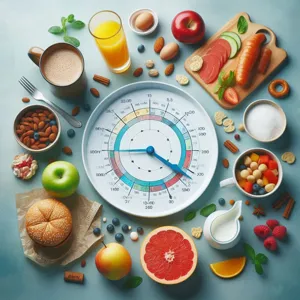Imagine the exhilarating sensation of the wind rushing past you, the rumble of the engine beneath you, and the open road stretching ahead—riding a motorbike is more than just a thrilling adventure; it can be a transformative experience for both your mental and physical health.
While many view motorcycling as a leisurely pastime or a daring hobby, research reveals a host of surprising benefits that extend far beyond the thrill of the ride. From enhancing focus and reducing stress to improving core strength and coordination, the act of riding a motorbike engages both your body and mind in ways you might never have considered. In this blog post, we’ll explore the unexpected advantages of hitting the road on two wheels, shedding light on how this seemingly simple activity can revitalize your well-being and lead to a more fulfilling lifestyle. So, gear up and get ready to discover how motorbiking can be a powerful tool for your overall health!
1. Introduction: The Joy of Riding a Motorbike

There’s a certain magic that comes with straddling a motorbike, a feeling that transcends the mundane and catapults you into a world of freedom and exhilaration. The moment you twist the throttle and the engine roars to life, the rhythm of your heartbeat syncs with the pulse of the road ahead. Riding a motorbike is not just about the destination; it’s an adventure that awakens your senses and invigorates both your mind and body.
Picture this: the wind rushing past you, the sun warming your skin, and the smell of fresh pine trees or ocean salt filling your lungs as you navigate winding roads and breathtaking landscapes. Each ride is a unique tapestry of experiences, where the thrill of acceleration meets the tranquility of nature. This sensory overload is more than just enjoyable; it sparks joy and ignites a sense of adventure that can lift your mood and enhance your overall well-being.
As you embrace the open road, the act of riding itself becomes a form of meditation, pulling you away from the chaos of daily life and allowing you to focus solely on the journey. The rhythm of the ride encourages mindfulness, helping to clear your mind and reduce stress. With every twist and turn, you cultivate a deeper connection to your surroundings, sharpening your awareness and fostering a sense of presence that is often lost in our fast-paced lives.
But the benefits of motorcycling extend beyond mental clarity. The physical demands of riding—maintaining balance, controlling the bike, and engaging your core—offer a unique workout that can improve your strength, coordination, and reflexes. As you navigate diverse terrains and weather conditions, you build resilience and adaptability, qualities that can translate into other areas of your life.
In this blog post, we will explore the surprising benefits of riding a motorbike, delving into how this exhilarating pastime can revitalize both your mental and physical health. Whether you’re a seasoned rider or contemplating your first ride, prepare to discover the transformative power of the open road.
2. Mental Health Benefits of Riding
Riding a motorbike is more than just a thrilling experience; it offers a multitude of mental health benefits that can significantly enhance your overall well-being. The moment you throw your leg over the bike and rev the engine, a wave of liberation washes over you. The rush of adrenaline as you accelerate down the open road can instantly elevate your mood, creating a joyous sense of freedom that few activities can replicate.
One of the most profound mental health benefits of riding is its ability to reduce stress and anxiety. The combination of fresh air, the rhythmic sound of the engine, and the scenery whizzing by creates a meditative state that allows riders to disconnect from daily pressures and worries. Many riders find that the experience of focusing solely on the road and the machine demands their full attention, effectively pushing aside intrusive thoughts and negative feelings. This mindfulness aspect of riding enables individuals to experience a form of mental clarity that can be hard to achieve in the hustle and bustle of everyday life.
Additionally, riding a motorbike fosters a strong sense of community. Whether you’re joining a local riding group or attending motorcycle events, the camaraderie among fellow riders can provide social support that is essential for mental health. Sharing stories of rides, challenges, and triumphs creates bonds that can enhance feelings of belonging and reduce feelings of isolation. The shared passion for riding serves as a powerful connection that can lead to lasting friendships and a supportive network.
Moreover, the act of learning and mastering new riding skills can boost self-esteem and confidence. Overcoming challenges, such as navigating tricky terrains or perfecting advanced riding techniques, instills a sense of accomplishment that translates into other areas of life. This newfound confidence encourages individuals to face their fears and take on new challenges, further enhancing their mental resilience.
In essence, the mental health benefits of riding a motorbike extend far beyond the thrill of the ride. It offers a unique blend of stress relief, community, and personal growth, making it an excellent choice for anyone looking to enhance their mental well-being while enjoying the open road.
3. Physical Health Advantages of Motorbiking

Riding a motorbike is not just about the thrill of the ride; it also brings a host of physical health benefits that might surprise you. For starters, balancing a motorcycle requires core strength and stability, engaging your abdominal muscles and improving your overall posture. As you navigate twists and turns, your body instinctively works to maintain equilibrium, effectively giving you a full-body workout without even setting foot in a gym.
Moreover, riding a motorbike can enhance your cardiovascular health. The act of riding increases your heart rate, which helps improve circulation and can lead to better heart health. Over time, consistent riding can boost your endurance and stamina, making everyday physical activities feel easier and more enjoyable.
Additionally, motorbiking can improve flexibility and coordination. As you shift your weight while leaning into corners or maneuvering through traffic, your body learns to adapt and react quickly, sharpening your reflexes. This heightened awareness and agility can translate into other areas of your life, from sports to everyday tasks.
Lastly, the outdoors aspect of motorbiking cannot be overlooked. Breathing in fresh air, soaking up sunlight, and connecting with nature can enhance your physical well-being. The combination of outdoor exposure and the adrenaline rush of riding creates a unique experience that promotes a healthy lifestyle. In essence, riding a motorbike is not just an exhilarating adventure; it’s a fun and effective way to rejuvenate your body and keep it in peak condition. So, rev up your engines and embrace the physical health benefits that await you on the open road!
4. Riding and Stress Relief: How It Works
Riding a motorbike can be an exhilarating experience, but beyond the rush of adrenaline and the thrill of the open road, it offers profound benefits for mental health, particularly in relieving stress. When you mount your bike and accelerate into the world, you engage in a multifaceted form of therapy that combines the freedom of movement with sensory stimulation.
As you navigate through winding roads and picturesque landscapes, the rhythmic sound of the engine and the rush of the wind against your skin create a meditative state that allows your mind to escape the daily grind. The focus required to ride safely demands your full attention, effectively pushing worries and stressors to the back of your mind. This immersive experience not only provides a break from your routine but also encourages mindfulness—a practice known to significantly reduce anxiety and promote emotional well-being.
Moreover, the simple act of riding can trigger the release of endorphins, the body’s natural feel-good hormones. These chemicals can elevate your mood, reduce feelings of pain, and create a sense of euphoria that lingers long after you’ve parked your bike. The combination of physical activity and fresh air contributes to this mood-boosting effect, promoting better oxygen flow and enhancing brain function.
Additionally, riding fosters a sense of community and connection. Whether you’re joining a local riding club or simply stopping at a roadside café, the camaraderie shared among fellow bikers can provide a support network, sharing experiences and stories that can uplift your spirit.
In essence, riding a motorbike serves as a potent antidote to stress, merging thrill with therapeutic benefits. So next time life feels overwhelming, consider hopping on your bike and letting the road lead you to a place of calm and clarity.
5. The Connection Between Biking and Mindfulness

Riding a motorbike can be a transformative experience that goes far beyond the thrill of the open road. One of the most surprising benefits of getting on a bike is its profound connection to mindfulness. As you mount your motorcycle, the world around you transforms into a vibrant tapestry of sights, sounds, and sensations that demand your full attention. Each twist of the throttle and lean into a corner requires a heightened awareness of your environment, making it an ideal practice for cultivating mindfulness.
When you’re riding, distractions fade away. The hum of the engine becomes a soothing soundtrack, and the wind against your skin serves as a reminder of the present moment. You find yourself fully immersed in the experience—the smell of the earth after rain, the rush of air as you accelerate, and the panoramic views unfolding before you. This sensory engagement encourages you to focus on the now, allowing worries and stresses to melt away with every mile you cover.
The rhythmic nature of riding can also induce a meditative state. As your body synchronizes with the bike, a sense of flow emerges, creating a natural balance between mind and body. This state of focused awareness not only enhances your riding experience but can also translate into your everyday life, promoting a greater sense of calm and clarity in your thoughts.
Moreover, the act of navigating different terrains and weather conditions fosters adaptability and resilience. Over time, you learn to embrace uncertainty, developing a mindset that thrives on challenges rather than shies away from them. This mental fortitude, combined with the peaceful enjoyment of riding, equips you with the tools to handle stress more effectively, contributing to overall mental well-being.
In essence, motorbike riding serves as a unique vehicle for mindfulness, inviting you to connect deeply with the world around you while nurturing a sense of inner peace. So, the next time you rev up your engine, remember that you’re not just embarking on a ride; you’re engaging in a powerful practice that rejuvenates both mind and spirit.
6. Building Confidence Through Motorcycling
Riding a motorbike is more than just a thrilling experience; it’s a powerful catalyst for building confidence. As you straddle the seat and grip the handlebars, you embark on a journey that challenges both your physical abilities and mental fortitude. The moment you twist the throttle and feel the engine roar to life, a rush of adrenaline courses through your veins, igniting a sense of empowerment that is hard to replicate.
The act of navigating the open road requires sharp focus and quick decision-making, pushing you to hone your reflexes and spatial awareness. Each ride presents new challenges—be it a winding mountain road, a bustling cityscape, or unpredictable weather conditions. Successfully overcoming these challenges fosters a sense of accomplishment that can significantly boost your self-esteem. As you gain experience, even the most daunting situations become manageable, reinforcing the belief that you can handle whatever life throws your way.
Moreover, the community of motorcyclists is one of camaraderie and support. Engaging with fellow riders not only provides opportunities for social interaction but also allows you to share experiences and learn from one another. This sense of belonging can deepen your self-assurance, as you realize you are part of a larger network of individuals who share your passion. Whether you’re out on a solo ride or participating in group events, the connection with others can transform your perception of yourself and enhance your confidence both on and off the bike.
In essence, motorcycling is a journey of self-discovery. Each adventure not only tests your limits but also reveals your strengths, ultimately contributing to a more confident you. So, the next time you hop on your bike, remember that you’re not just riding; you’re embarking on a transformative experience that will empower you in ways you never imagined.
7. Social Connections: The Biker Community

One of the most rewarding aspects of riding a motorbike is the sense of camaraderie that comes with being part of the vibrant biker community. This close-knit network is founded on a shared passion for riding, adventure, and the exhilarating freedom that comes from hitting the open road. When you join this community, you’re not just gaining a hobby; you’re becoming part of a tribe where friendships are forged over thrilling rides, shared stories, and mutual respect for the biker lifestyle.
From local riding clubs to international rallies, the opportunities to connect with fellow enthusiasts are abundant. Whether it’s meeting up for a weekend ride, participating in charity events, or attending motorcycle shows, these interactions can lead to meaningful relationships that extend well beyond the motorcycle itself. The sense of belonging and support from fellow riders can significantly enhance your mental well-being, providing a space where you can share experiences, advice, and encouragement.
Moreover, the biker community often values inclusivity and diversity, welcoming riders from all walks of life. This melting pot of backgrounds and experiences enriches conversations and broadens perspectives, fostering a sense of unity among enthusiasts. As you navigate winding roads and breathtaking landscapes together, bonds are formed that can last a lifetime.
Additionally, being part of this community can motivate you to participate in group rides and events, encouraging you to ride more often and explore new destinations. The thrill of discovering hidden gems alongside fellow bikers amplifies the joy of riding, making each journey an adventure filled with laughter, shared triumphs, and unforgettable memories.
So, if you’re looking not just for a mode of transportation but for a way to enhance your social life and mental health, look no further than the welcoming arms of the biker community. Embrace the ride, and you’ll find not only the thrill of the open road but also a network of friends who share your passion.
8. Enhancing Focus and Concentration
Riding a motorbike is not just about the thrill of the open road or the wind whipping against your face; it’s a powerful exercise in focus and concentration. Unlike driving a car, where distractions can easily creep in, motorcycling demands your full attention. Every twist of the throttle, lean into a turn, and change in road conditions requires an acute awareness of your surroundings. This heightened state of alertness serves as a mental workout, sharpening your cognitive abilities and improving your reaction times.
When you’re on a bike, your brain is in a continuous state of engagement. You must constantly assess traffic patterns, anticipate the actions of other drivers, and react swiftly to unexpected obstacles. This level of concentration can translate beyond the road. Many riders report enhanced focus in their everyday lives, finding it easier to concentrate on tasks, solve problems, and make decisions.
Furthermore, the meditative nature of riding can also contribute to improved mental clarity. The rhythmic nature of the ride—combined with the freedom of the open road—allows for a unique form of mindfulness. As your mind tunes into the sounds of the engine and the sights of the landscape around you, worries and distractions often fade into the background. This blend of focus, mindfulness, and adrenaline not only sharpens your mental acuity but also fosters a state of well-being.
So, the next time you throw on your helmet and hit the road, remember that you’re not just indulging in a thrilling adventure; you’re also nurturing your mind, enhancing your focus, and sharpening your concentration—benefits that will resonate long after the ride is over.
9. The Physical Workout: Core Strength and Balance
Riding a motorbike is not just an exhilarating experience that sets your heart racing; it also serves as a surprisingly effective workout for your body. As you navigate the twists and turns of the open road, you’re engaging in a physical activity that requires significant core strength and balance. The act of maintaining control over a two-wheeled machine involves constant adjustments and shifts in weight, which activates your abdominal muscles and promotes stability.
Every time you lean into a corner or shift your body to counteract the bike’s movements, your core muscles are engaged, working tirelessly to keep you upright and in control. This engagement helps strengthen your abdominal muscles, lower back, and even your pelvic area, contributing to improved posture and a more resilient physique. Unlike traditional workouts that can feel monotonous, the dynamic nature of riding keeps you on your toes, making it a fun and engaging way to build strength without even realizing it.
Moreover, balance is crucial when riding a motorbike. Unlike riding a bicycle, where you can put your feet down for support, motorbikes demand a higher level of coordination and balance to stay upright, especially at slower speeds. This requirement not only enhances your physical balance but also translates to better overall body awareness and coordination. As you hone these skills on your bike, you’re also training your body to respond more effectively in everyday situations, reducing your risk of falls and injuries.
So, the next time you hop on your motorbike, remember that you’re not just enjoying the thrill of the ride; you’re also giving your body a solid workout. Embrace the journey, knowing that each twist of the throttle is contributing to your core strength and overall physical fitness. Whether you’re a weekend warrior or a daily commuter, riding can be a powerful ally in your quest for improved health.
10. Adventure and Its Role in Well-Being
Adventure is often painted as a thrill-seeker’s paradise, but its true significance extends far beyond the adrenaline rush. Engaging in adventurous activities, such as riding a motorbike, can become a powerful catalyst for enhancing both mental and physical well-being. When you mount your bike and hit the open road, you’re not just embarking on a journey; you’re stepping into a world filled with opportunities for exploration, self-discovery, and personal growth.
The very essence of adventure lies in its ability to break the monotony of everyday life. The roar of the engine and the rush of the wind against your skin awaken your senses, pulling you away from the mundane and immersing you in the present moment. This sensory engagement can act as a form of mindfulness, allowing you to focus on the beauty of your surroundings—the sprawling landscapes, the vibrant colors of nature, and the sheer exhilaration of freedom. Such experiences can reduce stress, boost mood, and enhance overall mental clarity.
Moreover, the unpredictability of adventure brings with it a sense of excitement and novelty. Each ride can lead you to new places, challenging your comfort zone and encouraging you to adapt and learn. This sense of achievement can foster resilience, instilling confidence that spills over into other aspects of your life. Whether it’s conquering a steep hill or navigating winding roads, every challenge met on your bike can translate into a greater sense of accomplishment and self-efficacy.
Physically, riding a motorbike can also be a surprisingly effective workout. Balancing the bike engages your core muscles, while maneuvering through turns and accelerations promotes coordination and agility. The act of riding can enhance cardiovascular health and improve muscle tone, contributing to a more active lifestyle.
Incorporating adventure into your routine through motorbike riding is undoubtedly a thrilling experience, but its benefits extend far beyond mere enjoyment. It nurtures your mental health by cultivating mindfulness, fostering resilience, and enhancing self-esteem, while also contributing positively to your physical fitness. So gear up, embrace the spirit of adventure, and watch as both your mind and body thrive in the exhilarating world of motorbiking.
11. Safety First: The Importance of Protective Gear
When it comes to the exhilarating world of motorbiking, embracing the thrill of the ride should always be coupled with a steadfast commitment to safety. The open road beckons with promises of adventure, but it’s essential to prioritize your well-being by investing in high-quality protective gear. This gear is not merely an accessory; it’s a crucial line of defense against potential accidents and injuries.
First and foremost, a well-fitted helmet is non-negotiable. It serves as your primary safeguard, protecting your head from impacts and reducing the risk of severe injury. Opt for a helmet that meets safety standards and fits snugly, providing both comfort and security. Many modern helmets also come equipped with ventilation systems and visors to enhance visibility, ensuring that your ride remains as enjoyable as it is safe.
Next, consider investing in a durable motorcycle jacket made from materials like leather or textile with reinforced padding. This not only shields your torso from abrasion in the event of a fall but also offers protection against the elements. Look for jackets designed with breathability and moisture-wicking properties, which can help regulate your temperature during long rides.
Don’t overlook the importance of gloves and boots, either. Protective gloves can enhance grip and control while safeguarding your hands from scrapes and cuts. Likewise, sturdy, ankle-height boots not only provide comfort during long rides but also offer essential protection for your feet and ankles. Choose footwear with slip-resistant soles to ensure stability on your bike.
As you gear up for your next ride, remember that safety is a mindset as much as it is a practice. By embracing the importance of protective gear, you not only enhance your own confidence on the road but also set an example for fellow riders. With the right precautions in place, you can fully immerse yourself in the liberating experience of motorbiking while ensuring that you ride responsibly and safely. After all, the journey is just as important as the destination, and safety should always come first.
12. Tips for Getting Started with Riding
If you’re ready to experience the thrill of riding a motorbike while also reaping the mental and physical health benefits it offers, you’ll want to approach this new adventure with care and preparation. Here are some essential tips for getting started with riding, ensuring that your journey is both safe and enjoyable.
**1. Choose the Right Bike:** As a beginner, it’s crucial to select a motorbike that suits your skill level and comfort. Look for models that are lightweight and easy to handle, such as scooters or smaller displacement motorcycles. Brands like Honda and Yamaha have great starter bikes that offer a balance of power and manageability, making them perfect for new riders.
**2. Take a Motorcycle Safety Course:** Before you hit the road, consider enrolling in a motorcycle safety course. These classes provide valuable hands-on experience and instruction in essential riding techniques, traffic rules, and safety precautions. Not only will you learn how to operate your bike effectively, but you’ll also gain confidence and meet fellow riders.
**3. Invest in Quality Gear:** Safety should always be your top priority. Invest in a good helmet that meets safety standards, along with protective clothing such as gloves, jackets, and boots. Look for gear that is both durable and comfortable, as it can make a significant difference in your riding experience. Remember, the right gear not only protects you but also enhances your comfort on long rides.
**4. Start Slow and Practice:** When you first start riding, choose quiet, open areas to practice your skills. This will help you get a feel for the bike and build your confidence without the chaos of traffic. Start with short rides, gradually increasing your distance and complexity as you become more comfortable. Remember, every seasoned rider was once a beginner!
**5. Know Your Local Laws:** Before you set out, familiarize yourself with the motorcycle laws in your area. Regulations regarding licensing, helmet use, and lane splitting can vary greatly from one place to another. Understanding these laws not only keeps you compliant but also enhances your safety on the road.
**6. Connect with the Community:** Riding is not just about the bike; it’s about the community. Join local clubs or online forums to connect with other riders. They can offer invaluable tips, share experiences, and even organize group rides, which can be a fun way to explore new areas and build lasting friendships.
**7. Enjoy the Journey:** Above all, remember that riding should be an enjoyable experience. Embrace the sense of freedom that comes with being on two wheels. Take time to savor the sights, sounds, and sensations of the open road. Riding a motorbike can be a powerful way to enhance your mental and physical well-being, so let yourself fully immerse in the experience.
By following these tips, you’ll be well on your way to becoming a confident and skilled rider. So gear up, hit the road, and discover the surprising benefits that riding a motorbike can bring to your life!
13. Maintenance of Mental and Physical Health Beyond Riding
Riding a motorbike offers a thrilling escape from the daily grind, but its benefits extend far beyond the open road. To truly harness the mental and physical advantages that come with motorcycling, it’s essential to consider how to maintain this newfound health beyond the ride itself.
First and foremost, the sense of community among riders can be a powerful support system for mental well-being. Joining local motorcycle clubs or online forums fosters connections with like-minded individuals who share your passion. These interactions can lead to lasting friendships, encouraging socialization that combats feelings of isolation and anxiety. Plus, participating in group rides or charity events can enhance your sense of purpose and belonging.
Moreover, the mindfulness developed while riding can be practiced off the bike as well. The focus required to navigate curves and manage speed can translate into a more present and mindful approach to everyday life. Engaging in mindfulness practices such as meditation or yoga can further enhance your mental clarity and emotional resilience, allowing you to carry the serenity of a ride into your daily routine.
Physical health maintenance is equally crucial. While riding itself is an exhilarating workout, supplementing it with regular exercise can enhance your overall well-being. Incorporating strength training, stretching, or cardiovascular workouts can improve your stamina and flexibility, making those long rides even more enjoyable. Additionally, a balanced diet rich in nutrients will fuel your body, ensuring you remain energized and ready for the next adventure.
Lastly, consider incorporating regular health check-ups into your routine. Just as you maintain your motorbike for optimal performance, staying on top of your physical health through routine doctor visits, mental health check-ins, and even physical therapy can ensure that you’re in peak condition—both mentally and physically— for every ride you embark on.
In essence, the journey of maintaining mental and physical health doesn’t end when you park your motorbike. By fostering connections, practicing mindfulness, prioritizing physical fitness, and staying attuned to your health, you can extend the invigorating benefits of riding into a holistic approach to your overall well-being. So, the next time you rev your engine, remember that the ride is just the beginning of a healthier, more fulfilled life.
14. Personal Stories: Transformative Experiences from Bikers
When it comes to riding a motorbike, the thrill often transcends the mere act of cruising down the open road. For many bikers, the experience evolves into a journey of personal transformation, offering profound insights and life changes that go far beyond the mechanical aspects of their machines.
Take, for instance, the story of Sarah, a once-timid office worker who found herself enveloped in a cocoon of anxiety and self-doubt. After purchasing her first motorcycle, she hesitated to ride it, fearing the unknown. However, one sunny afternoon, she decided to take the plunge. As she geared up and hit the road, the wind whipping through her hair, Sarah felt a rush of adrenaline that washed away her fears. Each ride became a liberating escape, allowing her to tackle not only the winding roads but also the challenges in her personal life. Today, she describes her biking journey as a transformative chapter that helped her build confidence and embrace adventure.
Similarly, there’s Mark, a retired veteran who had been grappling with the invisible scars of his service. Seeking solace, he turned to motorcycling not just as a hobby, but as a form of therapy. Through the rhythmic hum of the engine and the meditative state of focusing on the ride, Mark discovered a unique way to process his experiences. Joining a local biking community, he forged deep connections with fellow riders who understood his journey, creating a supportive network that aided in his healing. For Mark, the motorbike became more than a means of transportation; it represented a lifeline that rekindled his joy for life.
These personal stories highlight the transformative power of riding a motorbike. Whether it’s conquering fears, fostering connections, or promoting mental well-being, the journey on two wheels offers an opportunity for reflection and growth. Each throttle twist and every curve taken not only fosters a sense of freedom but also ignites a passion for life that many bikers cherish deeply. As you consider your own relationship with biking, remember that the road ahead holds not just the promise of adventure, but also the potential for profound personal transformation.
15. Conclusion: Embracing the Ride for a Healthier Life
In conclusion, embracing the ride can be a transformative experience that extends far beyond the thrill of the open road. Riding a motorbike offers a unique blend of physical and mental health benefits that can invigorate your life in ways you might never have imagined. The exhilarating rush of wind against your skin, the rhythmic hum of the engine, and the freedom of navigating winding roads all come together to create a powerful antidote to the stresses of daily life.
Physically, the act of riding engages numerous muscle groups, enhancing your core strength, improving balance, and increasing overall endurance. Each twist and turn requires focus and coordination, turning every ride into a mini workout that leaves you feeling accomplished and revitalized. Moreover, the adrenaline rush associated with riding stimulates the release of endorphins, those natural mood lifters that can help alleviate anxiety and promote a sense of well-being.
Mentally, the motorcycle ride serves as a form of meditation on wheels. It requires your full attention, pushing aside the clutter of daily worries and allowing you to immerse yourself in the present moment. This mindful experience can lead to improved clarity of thought, creativity, and problem-solving skills, making you feel more grounded and centered in your everyday life.
As you consider the potential benefits of riding a motorbike, remember that this lifestyle is not just about the destination; it’s about embracing the journey. By taking to the road, you open yourself up to new experiences, friendships, and adventures that can enrich your life beyond measure. So, gear up, hit the throttle, and discover the surprising ways that riding can revitalize your mental and physical health—because life is too short to stay parked!
In conclusion, riding a motorbike offers not only the thrill of the open road but also a unique blend of mental and physical health benefits that can enhance your overall well-being. From boosting your mood and reducing stress to improving your core strength and coordination, the positive impacts are both surprising and profound. As you rev up your engine and embark on your next ride, remember that each journey is not just about reaching your destination, but also about embracing the freedom and joy that comes with it. So gear up, hit the road, and experience how the exhilarating world of motorcycling can transform your health in ways you might never have imagined. Happy riding!




































